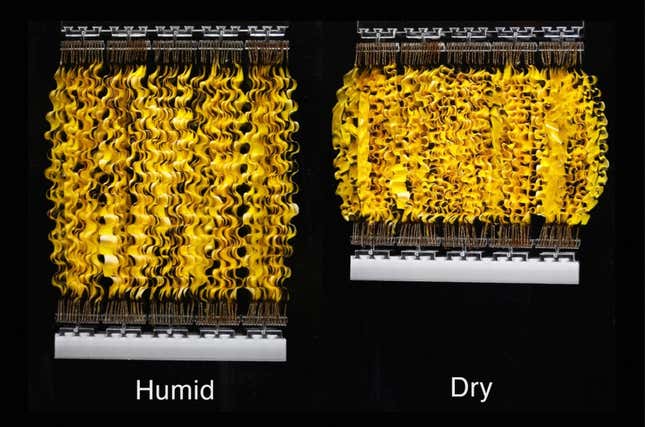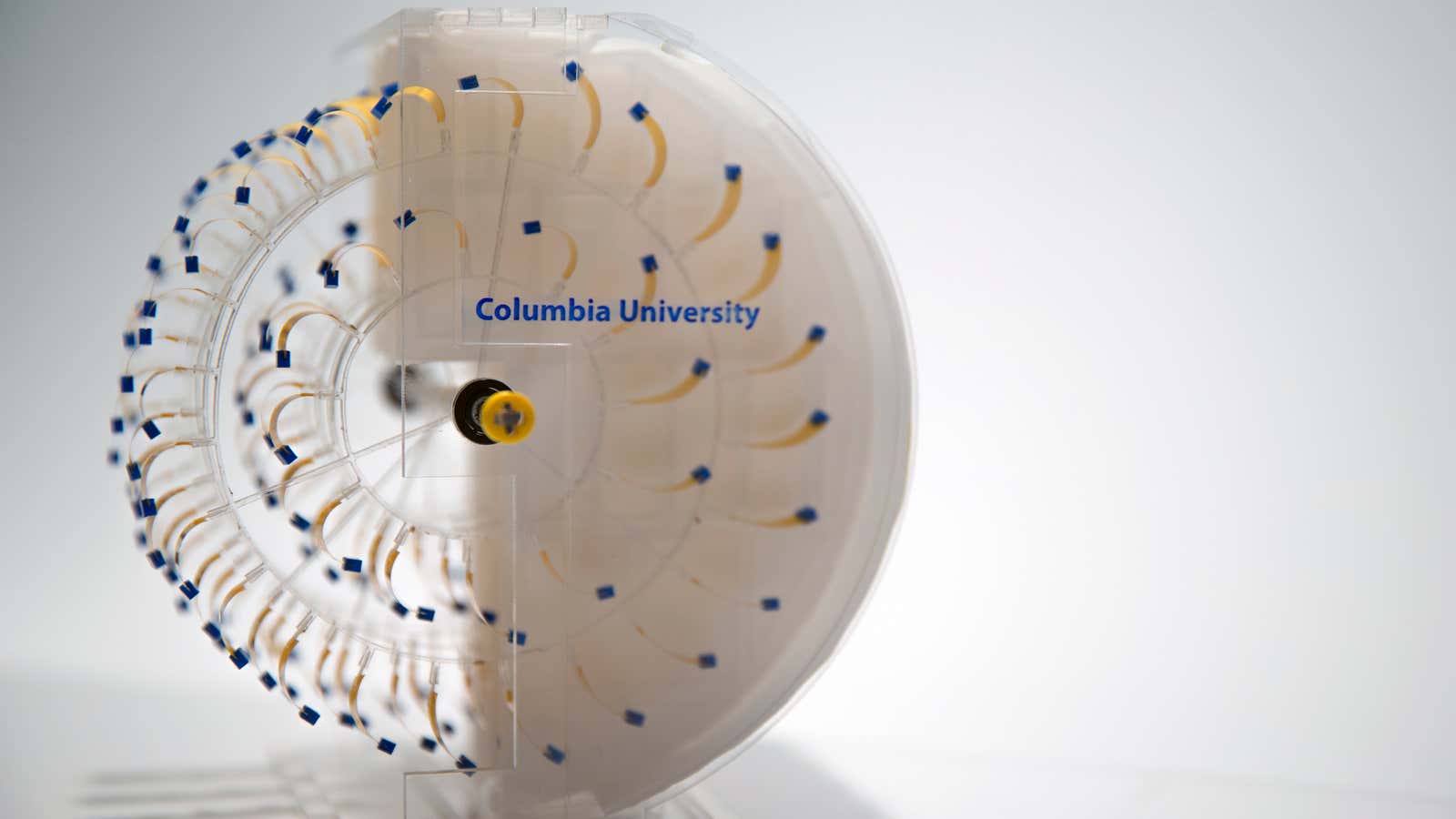A lot of water is evaporated every day on Earth (by one calculation some 1,000 trillion liters). And that evaporation is a clean source of solar energy that—until now—has been untapped.
Researchers at Columbia University have developed a new technology that can capture at least some of that evaporation energy.
The technology makes use of the property of bacterial spores, which are like seeds that can germinate into a living microbe under the right conditions. Absent those conditions, however, they are rather good at absorbing water whenever they find it. During absorption they swell and when they lose the water they contract, and they can do this repeatedly, without much wear and tear.
Ozgur Sahin and his team at Columbia wanted to find a way of capturing this small movement. Their solution, published in the journal Nature Communications, was to glue billions of these spores together on a plastic tape. Many of these plastic tapes attached together could then start to capture the tiny swelling and contraction of each spore. And that energy could then be converted into a useful form.

The interdisciplinary team of engineers, biologists and chemists then worked together to create different kinds machines that could capture rotary or piston-like movement.
This is not the first time that evaporation energy has been captured, but it is the first time that it has been done on a scale where objects could be moved. “The work pushes a great idea all the way into a practical demonstration of the potential,” Peter Fratzl, a biomaterial researcher at the Max Planck Institute of Colloids and Interfaces, told Quartz.
Sahin’s technology cannot compete with solar cells in the efficiency of capturing sun’s power. But Sahin told Quartz that this system could be hundreds of times cheaper to build per unit area, and thus attractive for scaling up rapidly.
Covering in-land bodies of water with machines has dual advantage: It becomes a source of energy and reduces the amount of evaporation. Japan, for instance, has already started covering lakes with solar cells.
Fratzl thinks this technology could be used to power, say, a phone. “I do not believe that this kind of system will revolutionize transport or other high-power applications, but it may provide the small power needed in remote places to operate communication devices,” he told Quartz.
There are other limitations. Sahin may have to genetically modify the spores to ensure that they never germinate, because germination into bacteria could render the machine useless. The machines have yet to be tested outdoors, and doing so may raise additional limitations that haven’t been spotted yet.
